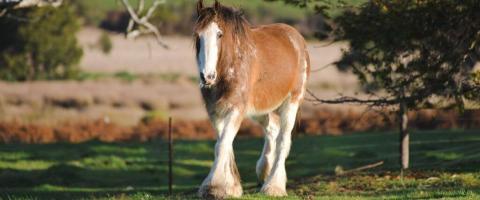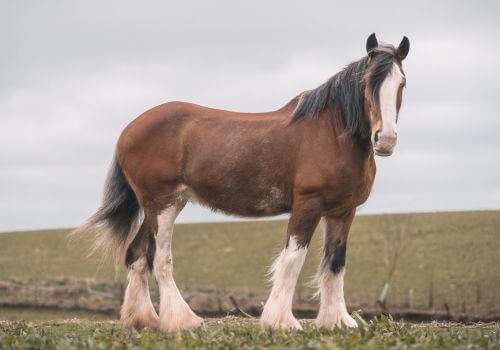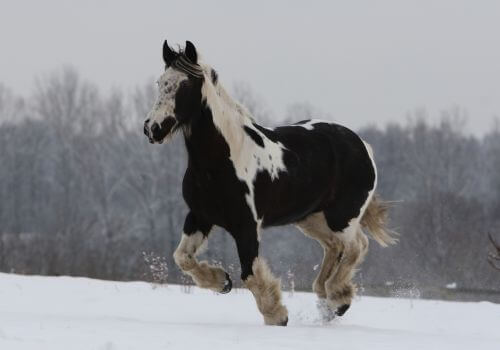
Meet the Mighty Clydesdale!
- Weight: 1,600 to 2,400 pounds
- Height: 16 hands (64 inches) to 18 hands (72 inches)
- Body Type: Long, silky feathering on legs; round feet; broad forehead; arched, long neck
- Best For: Owners and riders of all levels
- Life Expectancy: 20 to 25 years

History of the Heavy Hauling Clydesdale
The Clydesdale originated in Scotland in the late 18th and early 19th centuries in what is now Lanarkshire. The breed is named after the River Clyde, which flows through the area. Originally used for farming, hauling heavy loads, and war, the breed gained popularity due to its strength and endurance. The breed was brought to North America in the late 1880s, where it became a staple in agriculture and industry.
Due to the rise of mechanization, the Clydesdale population declined, but dedicated breeders have worked to maintain and promote the breed. The Clydesdale Horse Society was formed in 1877, ensuring the preservation of these majestic horses.
How Big is a Clydesdale? (Hint: They’re Huge!)
Clydesdales are among the largest horse breeds, standing between 16 and 18 hands tall and weighing between 1,600 and 2,400 pounds. Their large hooves can be as wide as a frying pan and weigh about 5 pounds each.
Why Were Clydesdales Bred?
Historically used for agricultural work and heavy hauling, Clydesdales are still employed in traditional logging and farming tasks. Today, they are popular in parades, exhibitions, and as carriage horses. Many Clydesdales are also used as therapy animals and trail horses due to their calm and gentle nature.
Colors and Markings of the Clydesdale
The most common color for Clydesdales is bay, though black, gray, chestnut, and roan variations exist. Many Clydesdales feature white facial markings and leg stockings, contributing to their striking appearance. Some may also display body spots.
What Makes Clydesdales Unique?
Clydesdales are best recognized for their large hooves, feathered legs, and high-stepping trot. Their impressive stature, combined with a calm and friendly temperament, makes them a standout breed.

Diet and Nutrition of a Clydesdale
Due to their size, Clydesdales require a substantial diet. They consume 25 to 50 pounds of hay daily and 2 to 10 pounds of grain. They also require more water than the average horse. Owners must ensure proper nutrition to prevent obesity or malnutrition.
Common Health Issues of the Clydesdale Clan
While generally hardy, Clydesdales can be prone to certain health conditions, including:
- Chronic Progressive Lymphedema: A condition that causes swelling in the legs due to poor circulation.
- Skin Infections: The thick feathering on their legs can trap moisture, leading to dermatitis if not properly managed.
Keeping Your Clydesdale Looking Majestic
Regular grooming is essential for Clydesdales. Their feathered legs require extra attention to prevent dirt buildup and infections. Daily hoof inspections and cleaning are necessary due to their large size. Proper shoeing is also critical, as their hooves require specialized horseshoes.
Saddling Up Our Final Thoughts
The Clydesdale is a powerful yet gentle breed that has played a vital role in history. Whether working in fields, pulling carriages, or participating in parades, Clydesdales continue to captivate horse enthusiasts worldwide.

